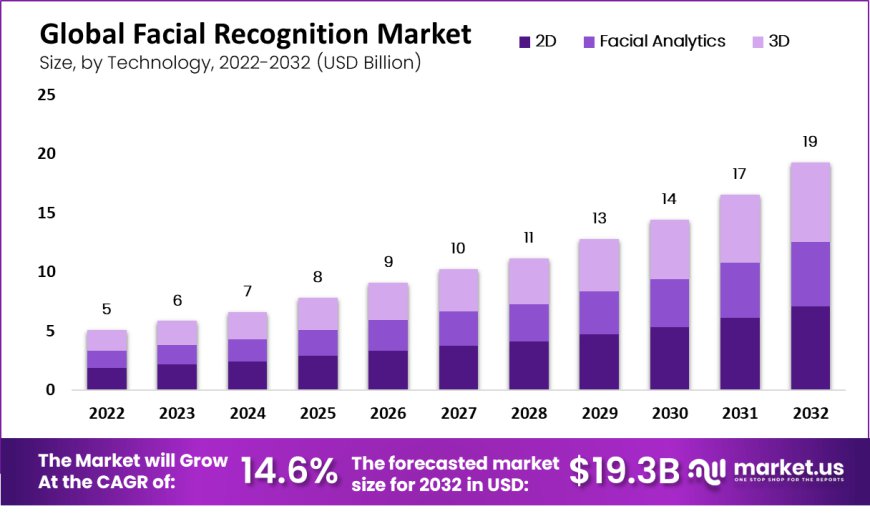Facial Recognition Market Revolution: How AI is Shaping Security Solutions
The global facial recognition market size value was USD 5.1 Bn in 2022. This market is expected to grow at a CAGR of 14.6% between 2023 and 2032. It is expected to reach USD 19.3 Bn during the forecast period.
Introduction
The facial recognition market is experiencing rapid growth due to advancements in technology, increased demand for security, and the proliferation of digital devices. Growth factors include the rise in demand for biometric authentication, enhanced security needs in various sectors, and advancements in artificial intelligence and machine learning.
Read More - https://market.us/report/facial-recognition-market/
However, challenges such as privacy concerns, high implementation costs, and the need for regulatory compliance can impact the market. For new entrants, opportunities lie in developing innovative solutions that address privacy issues, provide cost-effective systems, and cater to the diverse needs of different industries.
Emerging Trends
- Integration with AI: Facial recognition systems are increasingly integrating with AI to improve accuracy and efficiency.
- Mobile Applications: The use of facial recognition in mobile devices is becoming more widespread for security and personalized user experiences.
- Enhanced Security Systems: More businesses and government agencies are adopting facial recognition for advanced security measures.
- Wearable Technology: Facial recognition is being incorporated into wearable tech, such as smart glasses and watches.
- Retail and Customer Experience: Retailers are using facial recognition to analyze customer behavior and personalize shopping experiences.
Top Use Cases
- Access Control: Secure entry to buildings and restricted areas.
- Personal Device Security: Unlocking smartphones and tablets.
- Banking and Finance: Fraud prevention and secure transactions.
- Law Enforcement: Identifying and tracking suspects.
- Healthcare: Patient identification and access to medical records.
Major Challenges
- Privacy Concerns: Risks associated with data collection and misuse.
- High Costs: Expensive technology and implementation.
- Regulatory Issues: Compliance with varying legal standards across regions.
- Accuracy and Bias: Potential for errors and biased outcomes based on demographics.
- Security Threats: Vulnerability to hacking and data breaches.
Market Opportunity
- Emerging Markets: Growth potential in developing regions with increasing security needs.
- Innovative Applications: Development of new applications in different sectors.
- Cost Reduction: Opportunities for cost-effective solutions and mass adoption.
- Enhanced Algorithms: Improvements in algorithms to boost accuracy and reduce bias.
- Partnerships and Collaborations: Strategic alliances with tech companies and government agencies.
Conclusion
The facial recognition market is evolving quickly with technology advancements and increasing demand across various sectors. While privacy concerns and high costs present challenges, the opportunities for innovation and growth are significant.
New entrants can capitalize on these opportunities by focusing on developing cost-effective solutions, improving accuracy, and addressing privacy issues. As the market continues to expand, those who adapt and innovate will be well-positioned for success.

